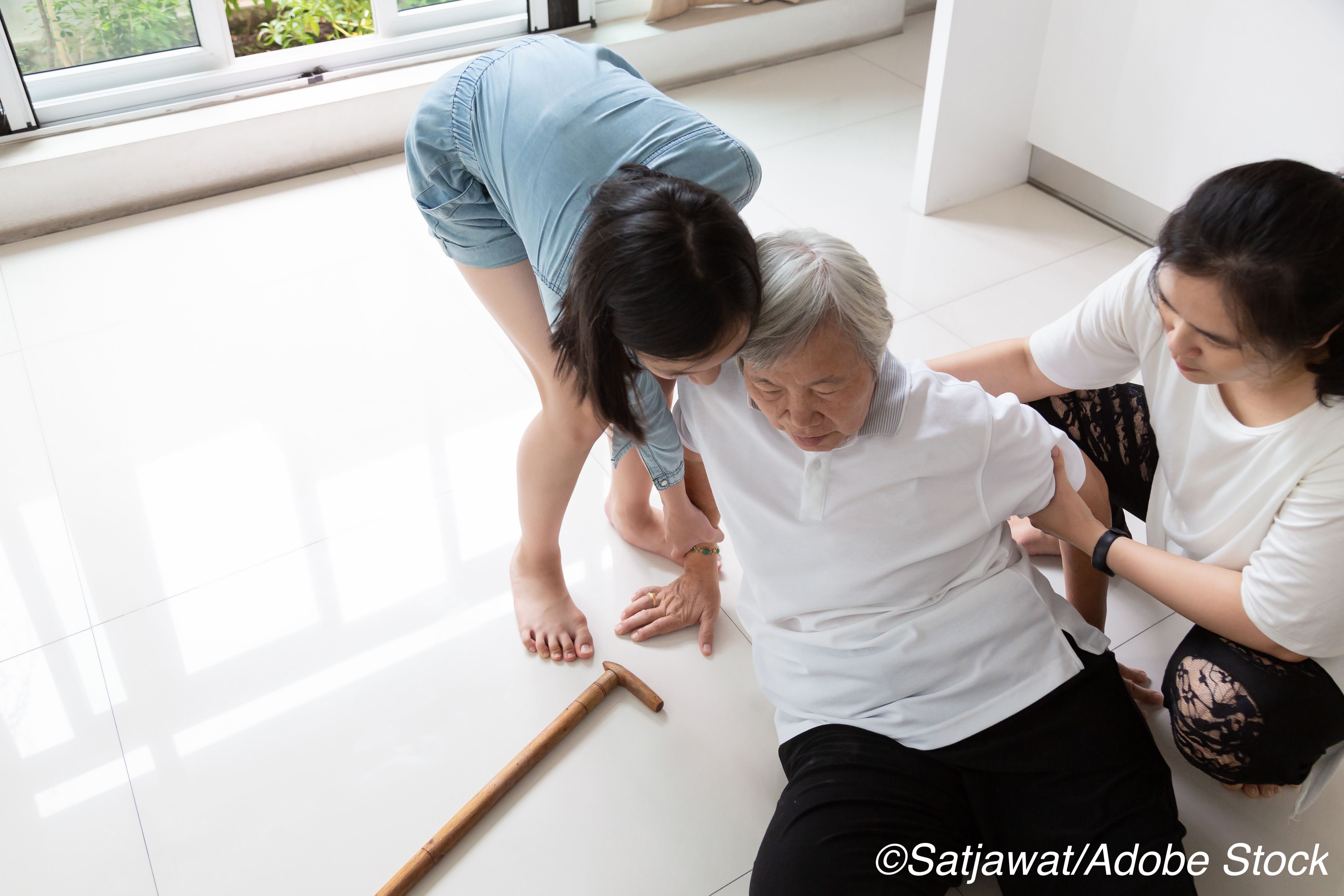 A bundle of interventions designed to prevent fall injuries did not ultimately prevent those injuries at statistically significant levels, new randomized trial data showed.
A bundle of interventions designed to prevent fall injuries did not ultimately prevent those injuries at statistically significant levels, new randomized trial data showed.
“In this pragmatic, randomized trial conducted in primary care practices, an individually tailored intervention, administered by specially trained nurses, that addressed multiple risk factors for falls did not result in a significantly lower rate of a first adjudicated serious fall injury than enhanced usual care among older adults who were at increased risk for fall injuries,” wrote study first author Shalendar Bhasin, MD, a physician-researcher with Brigham and Women’s Hospital in Massachusetts, and colleagues, in the New England Journal of Medicine. “The rate of all serious fall injuries, irrespective of when they occurred during the trial, also did not differ significantly between the two groups.”
Although knowledge about the risk of fall-related injuries is widespread, it is just as well-known that prevention efforts are inconsistent at best, with age-adjusted mortality for fall injuries remaining high.
Bhasin and colleagues oversaw the Strategies to Reduce Injuries and Develop Confidence in Elders (STRIDE) trial, which was designed to determine whether a patient-centered intervention would be effective when combining elements of practice redesign and evidence-based, multifactorial, individually tailored interventions implemented by specially trained nurses in primary care settings.
“We conducted a pragmatic, cluster-randomized trial to evaluate the effectiveness of a multifactorial intervention that included risk assessment and individualized plans, administered by specially trained nurses, to prevent fall injuries,” Bhasin and colleagues wrote. “…We hypothesized that the event rate would be lower by 20% in the intervention group than in the control group.”
A total of 2,802 people participated in the study, spread across 86 primary care practices across 10 health care systems. Participants were randomly assigned to the intervention or enhanced usual care. Mean participant age was 80 years, and 62% of participants were women.
“Risk was determined on the basis of whether the participant had sustained a fall-related injury in the previous year or had fallen two or more times in the previous year or whether the participant was afraid of falling because of problems with balance or walking,” Bhasin and colleagues wrote. “Persons with clinically significant cognitive impairment, defined by four or more errors on the six-item Callahan screening instrument, could be included in the trial if they had a proxy who was willing to provide consent and assist them during the trial.”
During the study, 155 (5.5%) participants in the intervention group died and 221 (7.9%) withdrew. In the control group, 141 of the 2,649 participants (5.3%) died and 155 (5.9%) withdrew consent before sustaining a serious fall injury. Potentially observable person-years of follow-up for the primary outcome were 86.5% in the intervention group and 88.5% for the control group.
The trial’s primary outcome was a first serious fall injury. All serious fall injuries were reported by telephone and reviewed by an adjudication team that was unaware of the treatment assignments, with events subsequently verified by independent data.
Incidence of a first adjudicated fall injury did not significantly differ between groups (events per 100 person-years of follow-up, 4.9 in the intervention group and 5.3 in the control group; HR 0.92; 95% CI 0.80-1.06; P=0.25). Participants’ first serious fall injury occurred at a rate of 25.6 events per 100 person-years of follow-up among those in the intervention group and 28.6 events per 100 person-years of follow-up for control participants (HR 0.90; 95% CI 0.83-0.99; P=0.004).
“Our finding that the multifactorial intervention was not significantly more effective than enhanced usual care in reducing serious fall injuries was unexpected, since previous efficacy trials have shown benefit with respect to individual components of the intervention,” Bhasin and colleagues wrote. “In the real-world practice settings of this pragmatic trial, the intervention may have been less effective than expected for several reasons.”
Bhasin and colleagues offered some potential hypotheses for the findings, including adherence and available support infrastructure.
“First, adherence to the intervention plan may have been lower than in previous efficacy trials because of difficulties that participants faced in implementing recommendations that required transportation, copayments, or insurance coverage,” Bhasin and colleagues wrote. “Second, participants were referred to existing services provided by local health or community centers, but the trial provided no additional resources. Third, adherence to behavior modification interventions (e.g., exercise) was not routinely monitored; therefore, participation may have fallen below the thresholds needed to achieve an exercise benefit.”
Serious adverse events that resulted in hospitalization or death were similar between groups. Rate of death from serious adverse events was 3.3 per 100 person-years of follow-up in both groups, with 32.8 hospitalizations per 100 person-years of follow-up occurring in the intervention group and 33.3 per 100 occurring in the control group.
Limitations identified by the authors included the fact that study participants were more educated than the general population and the fact that the trial had relatively low representation of races and ethnic groups.
-
An individually tailored intervention, administered by specially trained nurses, that addressed multiple risk factors for falls did not result in a significantly lower rate of a first adjudicated serious fall injury than enhanced usual care among older adults who were at increased risk for fall injuries.
-
The study authors suggest that adherence to the intervention plan may have been lower than in previous efficacy trials because of difficulties that participants faced in implementing recommendations that required transportation, copayments, or insurance coverage.
Scott Harris, Contributing Writer, BreakingMED™
Bhasin reported grants from NIA, grants from PCORI, during the conduct of the study; grants, personal fees and nonfinancial support from AbbVie, grants from Transition Therapeutics, grants from Alivegen, grants from Metro International Biotechnology, and personal fees from OPKO outside the submitted work.
Cat ID: 406
Topic ID: 398,406,282,406,494,747,192,255,925

